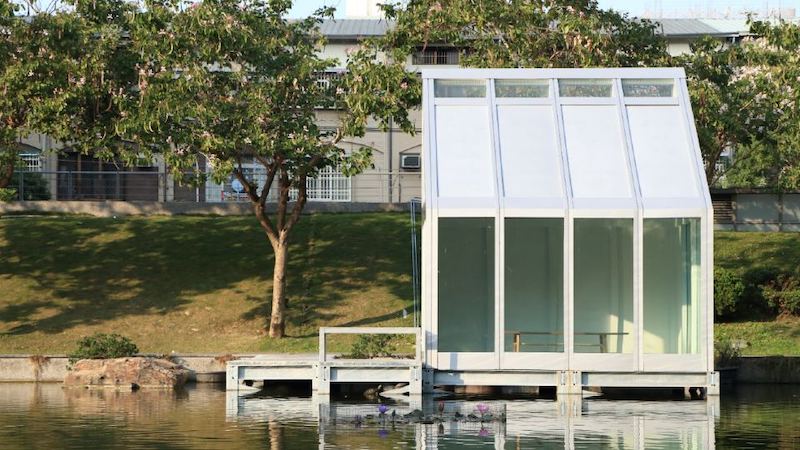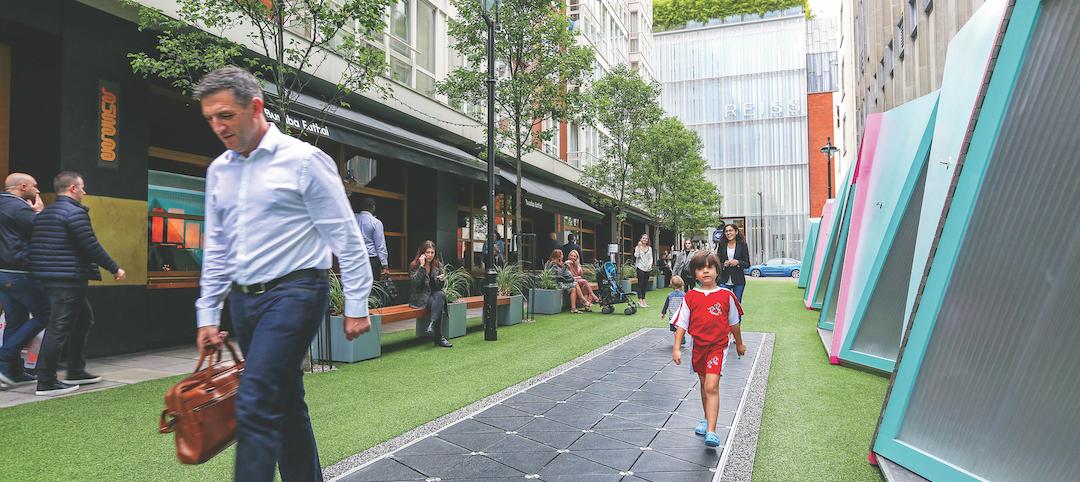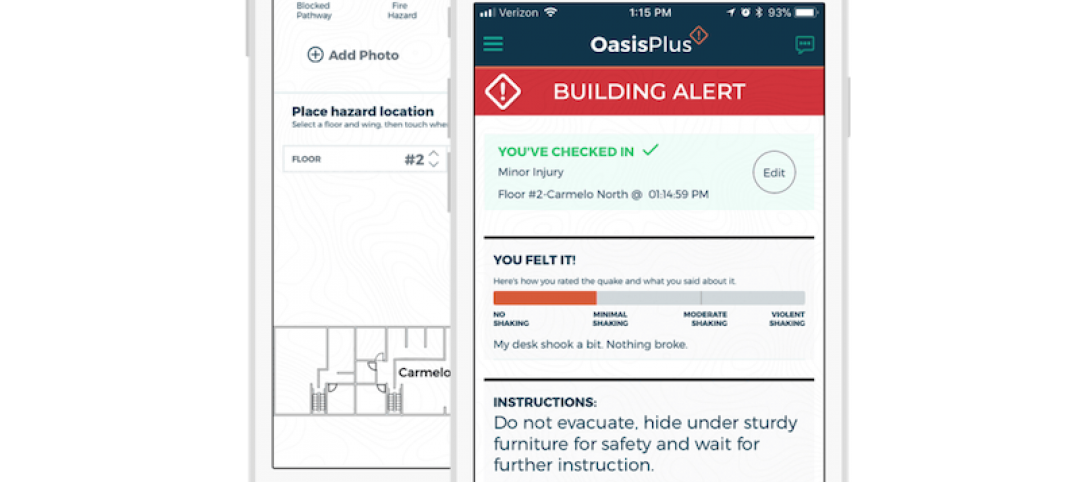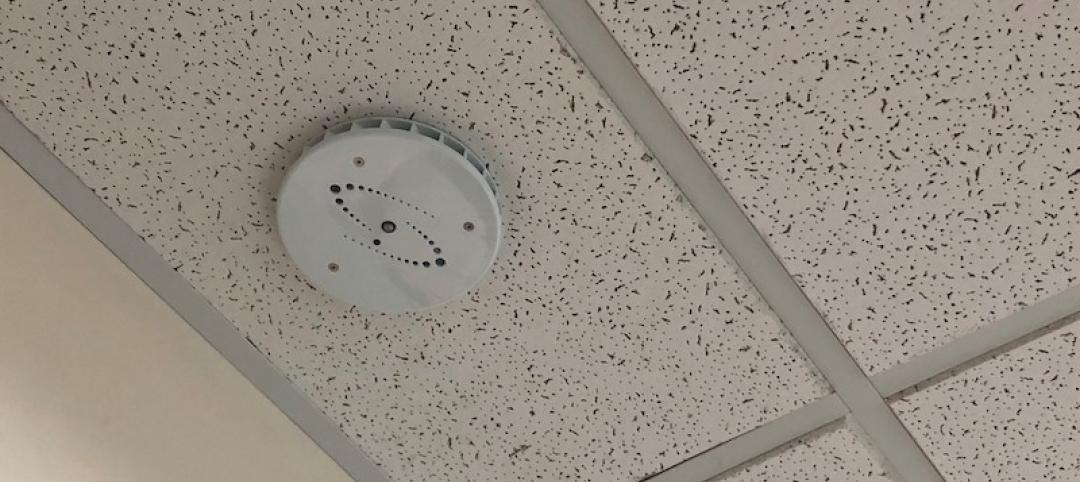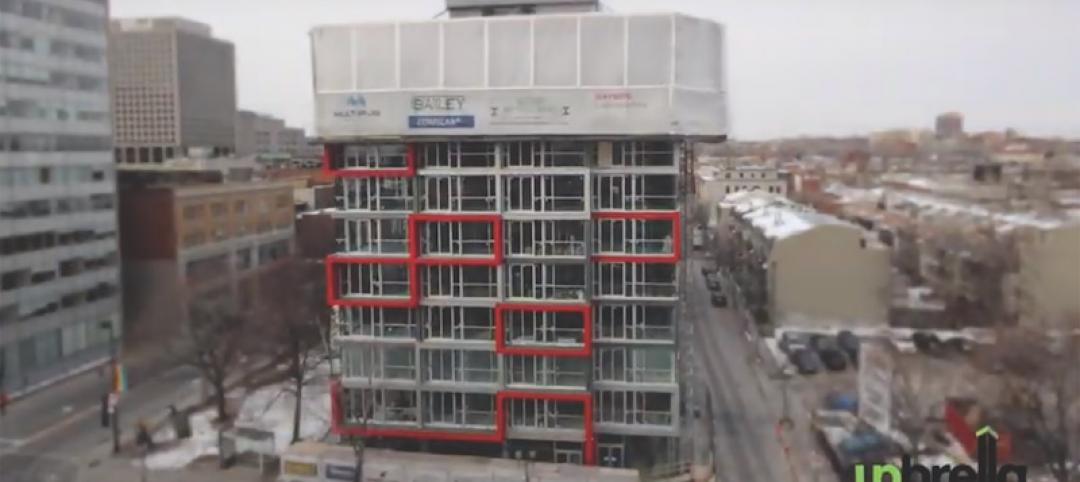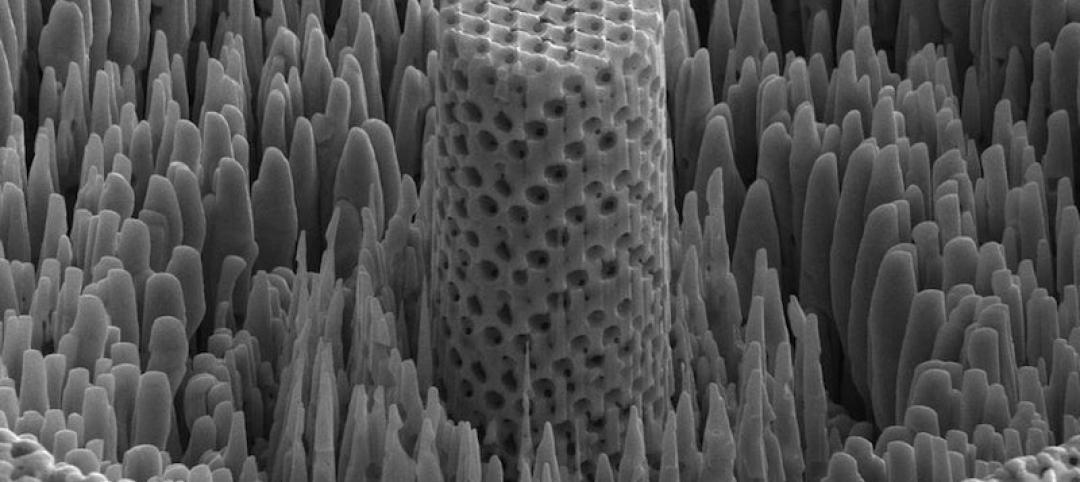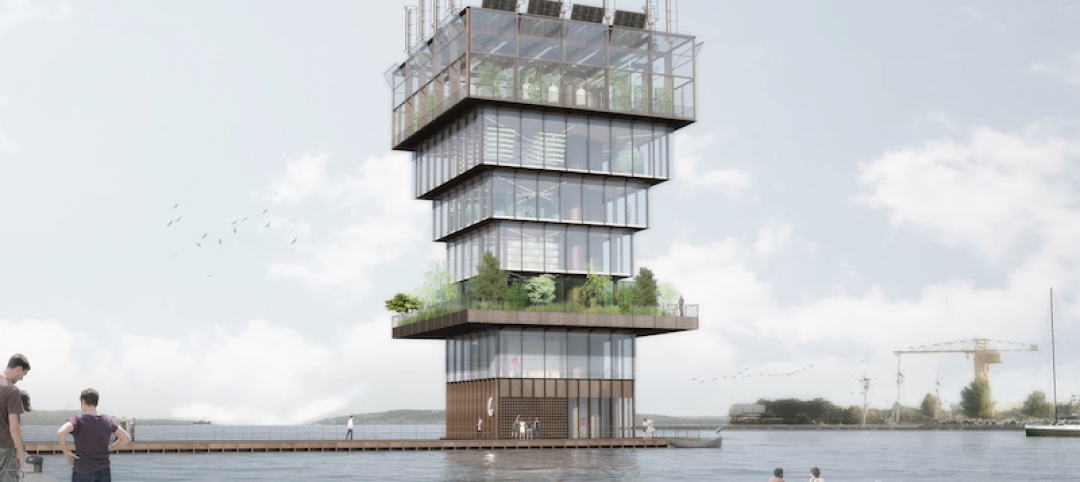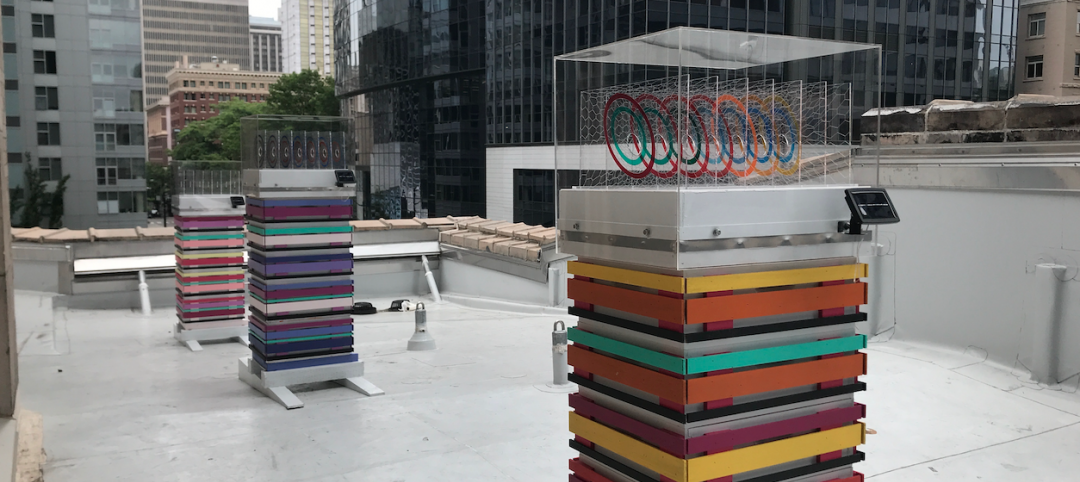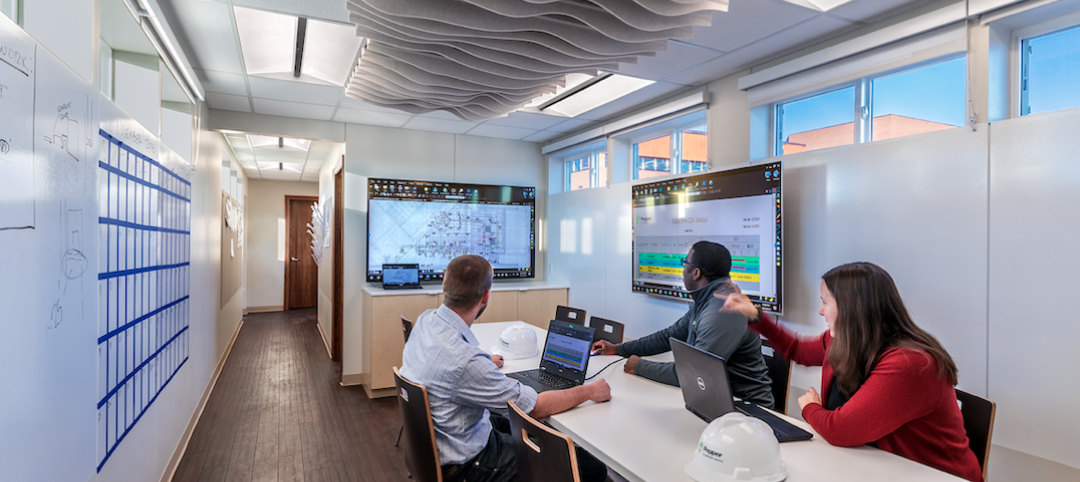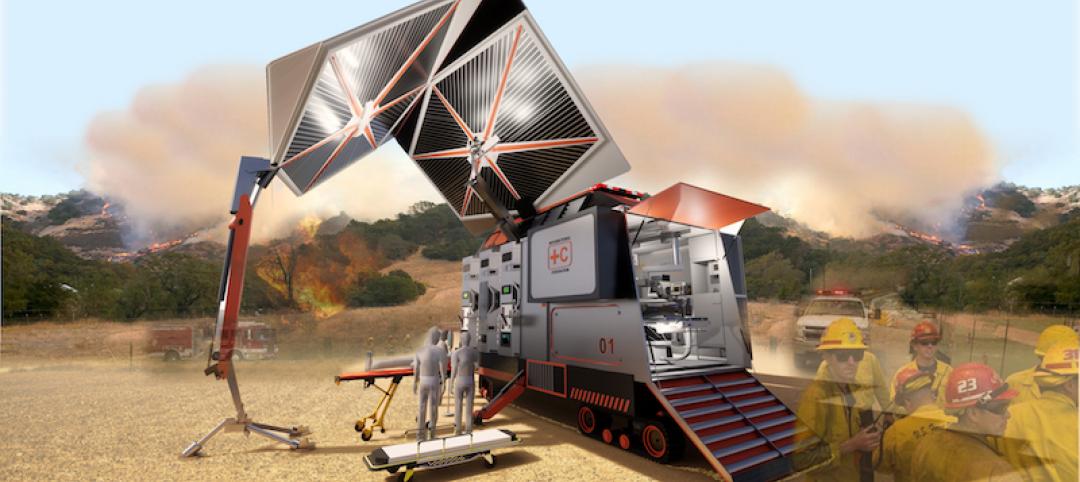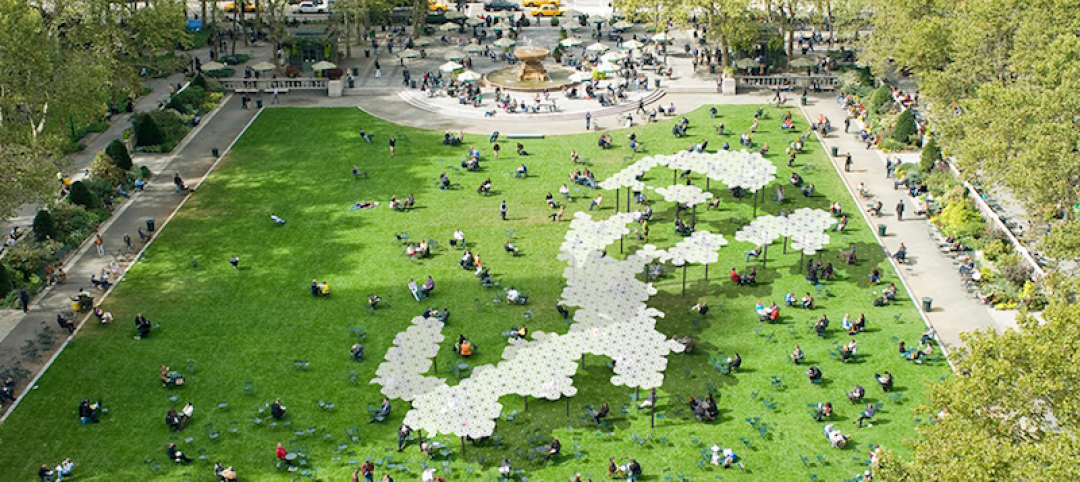Created by Dr. Matyas Gutai of Loughborough University, the water-filled glass (WFG) system uses water to heat and cool structures in an attempt to reduce building energy use. WFG utilizes a sheet of water trapped between a panel of glass. The system involves connecting the water-filled window panels to a storage tank, which can be located anywhere in the building, using pipes hidden in the walls, allowing the water to circulate between the two.
In warm weather, the buildings stay cool as the water absorbs external and internal heat. The warm water is then circulated to the storage tank. The heat is stored in the tank where, if the building temperature drops, it can be brought back to the walls to reheat the building using a monitoring system similar to central heating. The water can also be used for hot water supply.
Gutai has recently developed a version of the WFG system that uses a heat pump, which can heat and cool the water depending on the season.
Two prototype buildings, located in the differing climates of Hungary and Taiwan, have been created to test the system. Gutai used data gathered from these two “water houses” to develop a simulation system that evaluates the energy performance of the structures and the WFG system.
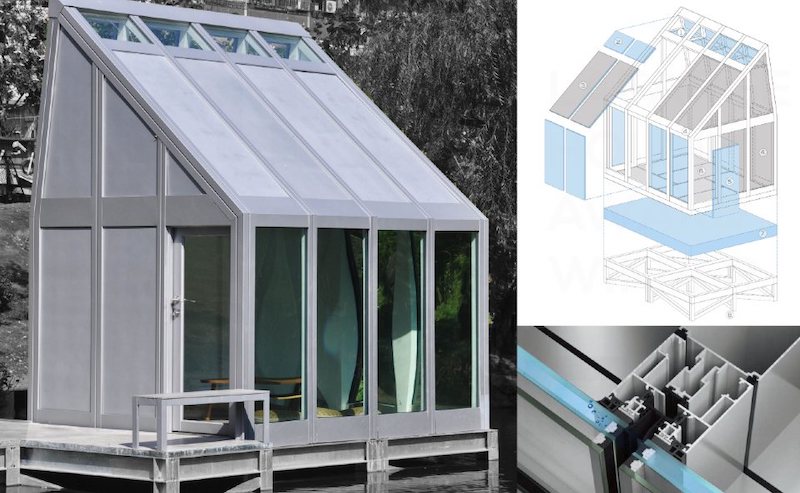 Developed by Loughborough University professor Matyas Gutai, water-filled glass utilizes a sheet of water trapped between a panel of glass to help regulate temperature swings in buildings. Simulation testing shows the technology will perform in all major climate regions.
Developed by Loughborough University professor Matyas Gutai, water-filled glass utilizes a sheet of water trapped between a panel of glass to help regulate temperature swings in buildings. Simulation testing shows the technology will perform in all major climate regions.
A July 2020 study, Energy Consumption of Water-filled Glass (WFG) Hybrid Building Envelope (bit.ly/2ZZMHFR), Gutai focused on the annual energy consumption for a typical office space (17.5 sm) with one glazed façade of equilateral orientation (south in the northern hemisphere). He used the simulation to explore how this office with a WFG system would fair in 13 cities from all major climate regions. Gutai then compared the WFG system with traditional systems of double-pane low-e and triple-pane filled with argon gas.
Among the findings of Gutai’s study:
• WFG is able to use the absorption of the water effectively to improve the energy performance of glass
• The water layer lowers the load for heating and cooling effectively, minimizing daily and seasonal peaks
• The WFG system saves energy in all major inhabited regions (every climate region except polar) with savings of 47-72% compared to double-pane low-e glass and 34-61% compared to triple-pane argon-filled glass.
“Glass is currently a liability in buildings as it compromises energy consumption, thermal comfort, acoustics and other aspects,” said Gutai. “WFG changes this paradigm and turns glass into an opportunity for sustainable construction. It shows us that thinking holistically about buildings and building components leads to a more efficient and sustainable built environment.”
Additional benefits of WFG include acoustics, reducing the need for building shading, and eliminating the need to color the glass.
Related Stories
Great Solutions | Aug 30, 2019
An ‘Internet of Beings’? Kinetic flooring promises more than just energy generation
Pavegen says its technology delivers a new level of human engagement in sustainability initiatives.
Great Solutions | Aug 7, 2019
Earthquake response system takes the guesswork out of seismic safety
The platform provides real-time monitoring to help avoid unnecessary evacuations and improve emergency response.
Great Solutions | Jul 12, 2019
Smart sensor maintains privacy, enhances safety in sensitive spaces
The HALO IOT sensor is designed for use in places where cameras are not welcome.
Great Solutions | Apr 9, 2019
Raising the roof is cool again
Upbrella allows for floor-by-floor building construction that is, reportedly, safer and more productive than traditional methods.
Great Solutions | Mar 12, 2019
When is wood not really wood?
Inspired by the look and cellular nature of wood, researchers create 3D-printed “digital wood” and “metallic wood” that is as strong as titanium, with the density of water.
Sustainability | Feb 20, 2019
Studio NAB’s Superfarm project creates an entire ecosystem in an urban environment
The Superfarm will go beyond what vertical farms typically produce.
Great Solutions | Feb 7, 2019
An apiary for the sanctuary
A Seattle events venue, The Sanctuary, has a roof that is literally a hive of sustainability.
Great Solutions | Jan 2, 2019
Net zero construction trailer brings health and wellness to the jobsite
As AEC firms scramble to upgrade their offices to maximize occupant wellness and productivity, Pepper Construction asks, What about the jobsite office?
Great Solutions | Dec 12, 2018
A modular, scalable mobile hospital can quickly respond to natural disasters and crises
CallisonRTKL’s design combines artificial intelligence, electric vehicle technology, and the latest in medical equipment.
Great Solutions | Nov 8, 2018
Public canopy system can be reconfigured by drones on the fly
The installation combines cyber-physical building materials constructed from lightweight carbon fiber filament with a collection of autonomous drones.


